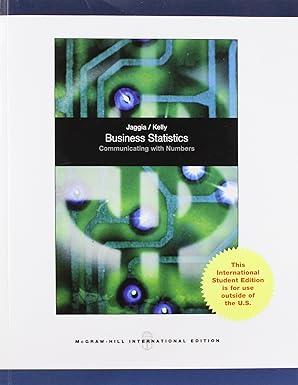For a sample of 20 New England cities, a sociologist studies the crime rate in each city
Question:
For a sample of 20 New England cities, a sociologist studies the crime rate in each city (crimes per 100,000 residents) as a function of its poverty rate (in %) and its median income (in
$1,000s). A portion of the regression results are as follows.
ANOVA df SS MS F Significance F Regression 2 188246.8 94123.4 9.04E-07 Residual 17 45457.32 2673.96 Total 19 233704.1 Coefficients Standard Error t Stat pvalue Lower 95%
Upper 95%
Intercept − 301.62 549.7135 -0.548 7 0.5903 − 1,461.52 858.28 Poverty 53.1597 14.2198 3.7384 0.0016 23.16 83.16 Income 4.9472 8.2566 0.5992 0.5569 − 12.47 22.37
a. Specify the estimated regression equation.
b. At the 5% significance level, show whether the poverty rate and the crime rate are linearly related.
c. Construct a 95% confidence interval for the slope coefficient of income. Using the confidence interval, determine whether income is significant in explaining the crime rate at the 5% significance level.
d. At the 5% significance level, are the poverty rate and income jointly significant in explaining the crime rate?
Step by Step Answer:

Business Statistics Communicating With Numbers
ISBN: 9780071317610
1st Edition
Authors: Kelly Jaggia





